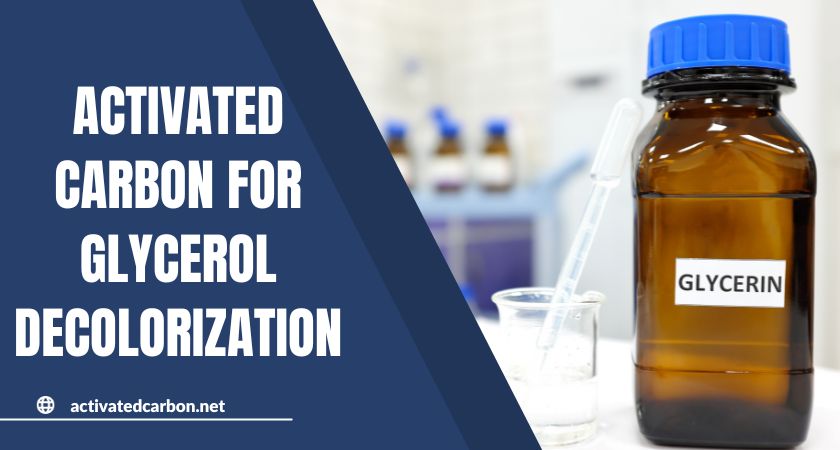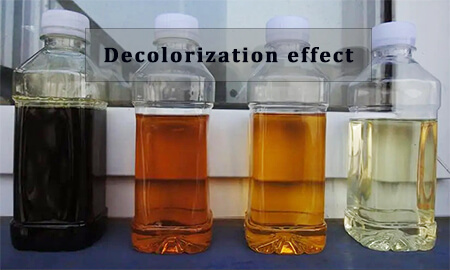
Glycerol, as a crucial industrial raw material, finds extensive use in industries such as food, medicine, and cosmetics. The raw materials for industrial glycerol production primarily come from by-products of biodiesel and oleochemicals. After distillation, condensation, and decolorization, the final product is obtained.
This article will focus on the application of activated carbon in the glycerol decolorization process. Please continue reading for more details.
What is Glycerol?
Glycerol, also known as glycerin, is a colorless, odorless, sweet-tasting organic compound. It appears as a clear and viscous liquid at room temperature, exhibiting high solubility.
Glycerol is commonly used as a raw material or additive in the cosmetics, medicine, food, and tobacco industries.
Classification of Glycerol
Glycerol can be classified into two types based on the production method: natural glycerol, produced from natural fats, and synthetic glycerol, synthesized from propylene.
- Natural Glycerol: Produced from natural oil fats. 42% of natural glycerol comes from by-products of soap making, while 58% comes from fatty acid production.
- Synthetic Glycerol: Produced using propylene as a raw material. It is mainly synthesized industrially by propylene chlorination and propylene peracetic acid oxidation.
Glycerol Production Process
The production process of glycerol involves filtration, degumming, decolorization, distillation, deodorization, and other processes.
Among these, decolorization is a critical step. Glycerol decolorization aims to remove impurities, enhancing the quality of glycerol and preparing it for subsequent processes. The common decolorization method in the glycerol industry involves adding activated carbon to remove impurities and pigments during production.
Activated Carbon for Glycerol Decolorization

The current mainstream method for glycerol decolorization is fixed-bed decolorization. In this process, a considerable amount of activated carbon is filled into the decolorization tank. Glycerol enters from the top at a specified temperature and flow rate, gradually passing through the activated carbon bed. The micropores on the activated carbon adsorb impurities in glycerol.
Activated carbon can not only adsorb color substances but also exhibits strong selectivity for different types of pigments. This targeted removal improves the purity of glycerol during the decolorization process.
By using activated carbon for glycerol decolorization, the discharge of harmful substances into wastewater is effectively reduced, significantly lowering the environmental impact.
At this point, you may wonder how to choose activated carbon for optimal results. Don’t worry; the answer is coming up. Please continue reading!
Do you plan to purchase activated carbon?
How to Choose Activated Carbon?

Activated carbon used for glycerol decolorization needs to have high adsorption capacity, good chemical stability, heat resistance, low ash content, and low impurity content. Our company offers specialized granular activated carbon and powdered activated carbon for decolorization.
- Granular Activated Carbon
Granular decolorization carbon is designed for efficient use in fixed or moving beds to purify and decolorize various aqueous and organic liquids. Choosing a particle size of 12*40 mesh, it exhibits high adsorption and low flow resistance for low to medium viscosity liquids. - Powdered Activated Carbon
Powdered activated carbon is produced from plant materials through steam or chemical activation. It possesses excellent adsorption capacity, high purity, and good filtration characteristics. Compared to granular activated carbon, it has better decolorization capabilities. Most of our customers choose wood-based powdered activated carbon with pH adjustment.
Hint: Activated carbon will adsorb impurities and other substances from glycerol. Therefore, glycerol needs reprocessing after decolorization to remove residues from activated carbon. Additionally, activated carbon gradually becomes saturated and requires replacement or regeneration to maintain decolorization effectiveness.
Final Thoughts
In summary, activated carbon plays a crucial role in the glycerol decolorization process, and its adsorption performance and quality directly impact the quality and purity of glycerol. Therefore, choosing the right activated carbon is crucial.
Zhulin Activated Carbon has proven to be excellent in glycerol decolorization, with numerous customer cases. If you have any questions or requirements, please feel free to contact us.
Do you plan to purchase activated carbon?